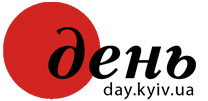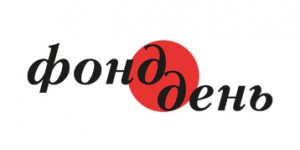The month-long exposition at the Lviv Art Gallery will be held under a motto quoting Voltaire: “Ukraine has always sought to be free.”
The idea of an exhibit dedicated to Ivan Mazepa was conceived two years ago, when shooting A Prayer for Hetman Mazepa. Either Bohdan Stupka (starring as Mazepa) or Borys Voznytsky, director of the city art gallery, mentioned the possibility of an interesting and meaningful exposition. Voznytsky is known for bringing every idea to its logical conclusion; he is also markedly consistent. Two years ago he organized an exhibit in Lviv, dedicated to Hetman Vyhovsky. This time he heads the team setting up a museum of Cossack glory in Ruda, a village in Lviv oblast. However, even his talent and enthusiasm would hardly suffice for the scope and quickness of the Mazepa project, but for Volodymyr Nediak, another devotee of Cossack history, art critic, director of the Emma Publishers (Kyiv). He traveled across Ukraine, taking 8,000 pictures of museum items, relating to the Cossack period (he knew where to look for them, of course). In a word, the two joined forces and, aided by over twenty museums all over Ukraine, are finishing work on the project, so that the residents and guests of Lviv will see the display this summer (scheduled to open by August 24).
Needless to say, illustrating Ivan Mazepa and his epoch required government support, as pertinent materials were to be found both within and outside Ukraine (in Sweden, France, Poland, Egypt, Russia, to mention but a few). The president’s edict marking the tenth anniversary of Ukrainian independence mentioned a world exhibit commemorating Ivan Mazepa. A special conference took place in Kyiv, attended by a number of museum directors. Regrettably, the outcome was characteristic. The state could not provide adequate financing and the exhibit was doomed. It was saved by the “twelve apostles,” in the words of Volodymyr Nediak, as a group of Ukrainian entrepreneurs, financiers, and private citizens raised the required fund.
The sum thus collected amounted to UAH 120,000, so the scope had to be narrowed somewhat, focusing on items associating Mazepa with Western Ukraine, particularly his visits to what is now Lviv oblast. In fact, this is not the first exhibit dedicated to Mazepa in Lviv. In May 1932, the National Museum, owing to the energy and dedication of its long-time director Ilarion Sventsytsky, drew public attention to Mazepa’s spectacular figure, although there is nothing on record about what was actually on display at the time, except the hetman’s own Bible still at the museum. Printed at the Kyiv Pechersk Lavra in 1703, the endpaper reads that it was a gift from Tsarevich Aleksei Petrovich, making the edition unique, perhaps the only copy surviving the ruin of Baturyn along with Mazepa’s palace and its vast library. The Scriptures stayed with the hetman until his dying day, helping him in the hardest moments of his remaining years.
Among the interesting discoveries of the exhibit are a little-known portrait of Mazepa from the Ivan Franko Museum of Lviv, the hetman’s sword, silver goblet, ceremonial star used in religious processions (his present to the Church), a silver plate (his mother Mariya Mazepa’s gift to the Hlukhiv Convent, late seventeenth century miracle-working icon of the Mother of God of Liubech, Vasyl Kochubei’s inkhorn, worn fastened to the belt, Pavlo Polubotko’s mace, and many others. The exposition includes modern objets d’art addressing Mazepa’s epoch, among them Volodymyr Furyk’s costumes for the motion picture A Prayer for Hetman Mazepa photographs of churches, cathedrals, and monasteries built with Mazepa’s money. The exposition illustrates numerous myths about his life. An urn with earth from Mazepa’s grave is placed in a separate hall, brought from Halach by Black Sea Cossack General Bohdan Sushynsky.







